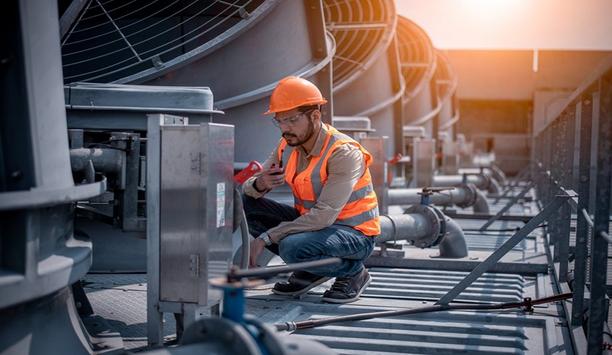This time of year, a lot of planning is underway. Companies throughout the HVACR industry are mapping out the best path to maintain their current level of business, pursue growth while staying in their lane, or expand into a new area based on changing customer needs and industry opportunities.
Whether you’re a small family-owned residential HVAC shop, a major player in commercial HVACR service or manufacturing, or anywhere in between, it’s helpful to be aware of the strong dynamics that promise to wield their influence industrywide in the year ahead.
regulatory influences
These megatrends differ from the regulatory influences the industry has been under since 1989 when the Montreal Protocol started the phaseout of ozone-depleting substances, such as chlorofluorocarbons (CFCs).
Since then, regulations including the Kigali Amendment and U.S. EPA American Innovation and Manufacturing (AIM) Act, both designed to phasedown the consumption and production of high global warming potential (GWP) hydrofluorocarbons (HFCs) have created a steady stream of influence that will continue for years to come.
transition to lower-GWP solutions
In planning for 2024, companies must remain aware of the scheduled step-downs of HFCs
In planning for 2024, companies must remain aware of the scheduled step-downs of HFCs and follow processes that support a smooth industry transition to lower-GWP solutions.
Superimposed on these regulations are several megatrends, many of which are also driven by environmental needs and the universal aim to repair a planet in crisis. However, unlike regulations, the benefits of paying attention to these influences go beyond adhering to the rules so as not to risk fines.
Benefits of megatrends
The motivations behind incorporating megatrends into business plans can include widening your customer base by attracting those who chose vendors demonstrating sustainability commitments, being prepared to meet emerging customer demand, achieving operational cost and/or energy savings, staying resilient during unforeseen changes or challenges in the industry, and more.
Here are a few top megatrends I foresee surging ahead to influence HVACR in 2024.
Heat Pumps -The “Heroes” of Decarbonization
As our industry and others not only stay focused on a zero-net-carbon future but also continue to accelerate efforts to get us there, we’re going to see heat pumps become more important and prevalent.
Through their thermal management process, heat pumps don’t create heat, but instead extract and move it from one place to another. This makes heat pumps a viable replacement for traditional heating methods, such as burning coal, wood, or propane that come with significant carbon emissions.
Thermal management technology
Instead of simply allowing that heat to dissipate in the atmosphere, heat pumps can recover heat
In addition, the thermal management technology of heat pumps can be used to convert waste heat to energy.
This capability is especially advantageous to processes and industries, such as lumber drying that generate a ton of heat. Instead of simply allowing that heat to dissipate in the atmosphere, heat pumps can recover heat and then harness it for energy.
Efficiency
Lastly, technology has improved considerably, making heat pumps more energy efficient, even in colder climates. Along with the innovative properties of hydrofluoroolefin (HFO) thermal management fluids, which offer zero ozone depletion potential (ODP) and very low GWP, heat pumps are positioned to be even more advantageous than fossil fuels.
As businesses and industries pursue aggressive benchmarks for decarbonization, across the board from homes to businesses to manufacturing facilities, we can expect to see a growing preference for heat pump use.
Circularity’s Criticality
Through the 2010s and into the 2020s, the concept of circularity, putting practices in place so that materials remain in circulation and never become waste has taken root.
It finds itself on the priority list for every business in every industry. The sustainability of our planet depends on it. So does business strategy.
Sustainable circularity pathways
Maximizing the efficient use of all our resources is essential for the strength of our industry
Circularity offers more than a demonstration of responsibility to our planet. Maximizing the efficient use of all our resources is essential for the strength of our industry and the businesses that support it.
This move toward establishing sustainable circularity pathways can be seen much like step-down regulations since circularity will be a steady influence on HVACR for the foreseeable future.
Importance of F-gases
However, in the context of 2024 megatrends in HVACR, the criticality of circularity will elevate the importance of F-gases, especially HFOs, and draw attention to so-called “natural” refrigerants like ammonia, CO2, and propane.
For example, CO2 refrigerants are not reclaimed. Instead, they are vented into the atmosphere as greenhouse gas emissions that can remain in the atmosphere for hundreds of years. On the other hand, F-gases can be reclaimed, recycled, and reused across multiple applications.
Reclaim, recycle, and reuse
This translates into maximizing resource efficiency and generating less waste generation and lower emissions.
We can expect to see the industry work strongly to encourage and support refrigerant reclamation, recycling, and reuse, creating a preference for HFO-driven solutions over non-circular fluids such as “natural” refrigerants.
Emerging Immersion Cooling
Data centers allow us to do pretty much everything we consider a modern-day necessity
Our world today is founded on data centers, nearly 8,000 of them worldwide, according to recent estimates.
These data centers allow us to do pretty much everything we consider a modern-day necessity and/or convenience from high-powered computing and gaming at faster speeds to AI and electric vehicle technologies.
Challenges with traditional air-cooling
These data centers work nonstop and incredibly hard, generating tremendous amounts of heat as they do so.
The traditional method of air-cooling these centers is quickly becoming undesirable, due to the massive amount of water, energy, and other resources consumed in the process.
Benefits of immersion cooling
Immersion cooling, a process in which hot equipment is submerged in a thermal management fluid offers much more efficient cooling, without the tremendous use of resources.
Given its many benefits, we can expect to see two-phase immersion cooling (2-PIC) grow exponentially, replacing air-cooling methods. Ideally, data centers will convert to 2-PIC, which, unlike single-phase immersion cooling, operates in a contained system without the need for pumps and external heat exchangers.
2-PIC
2-PIC will bring more attention to the cooling sector as well as a greater appreciation and desire
Though seemingly a bit removed from HVAC, the topic of 2-PIC is being discussed more frequently, and the use of technology is increasing.
As a result, 2-PIC will bring more attention to the cooling sector as well as a greater appreciation and desire for thermal management solutions that support the environment and modern life. It will also drive innovations that could prove beneficial for many aspects of HVACR.
Workforce Shortages
There are approximately 2,000 open HVAC technician positions in the U.S., leaving a gap of about one-third of what the industry needs and threatening the operations of businesses of all sizes. This, combined with new technologies, including A2L refrigerants that require special safe handling considerations means companies must place an even higher priority on training.
The crews in the field today need to be proficient in working with HFCs, HFOs, A2Ls, and possibly even older legacy refrigerants that are “hanging on” in some applications.
New equipment manufacturing regulations
Shifts in equipment for installation and maintenance will further increase the need for a fully-trained technician
It’s also important to note that, as of Jan. 1, 2025, the AIM Act will begin enforcing regulations on new equipment manufacturing. For example, all new AC equipment will be required to operate with refrigerants carrying a GWP of 700.
We’ll see the elimination of new equipment using R-410A, and manufacturers will move away from low-to-medium temperature refrigeration systems using R-404A, R-407A, R-448A, and R-449A. The resulting shifts in equipment for installation and maintenance will further increase the need for a fully trained technician workforce that can cover all the bases.
Conclusion
In 2024, newer, better refrigerant technologies will be commercialized, and their adoption will continue to expand, requiring companies to have a strong refrigerant management plan in place. Moreover, as has been the case throughout history, people in and outside our industry will look to be part of the next big thing.
For HVACR, the “dinosaurs” of industrial gases, such as CO2, ammonia, and propane which were brought into use over a century ago, may get another look. But they will be challenged by the same inherent problems that led to them being largely abandoned.
Innovation with a new environmental profile
Meanwhile, an innovative new generation of F-gases will offer a better path forward in terms of higher performance and an environmental profile meeting the demands of today’s world.
As several megatrends “make their move” and influence HVACR in 2024, the industry will continue to focus on ensuring equipment and the refrigerants that power it work to achieve lower GWP, greater decarbonization, and an overall healthier planet.


















